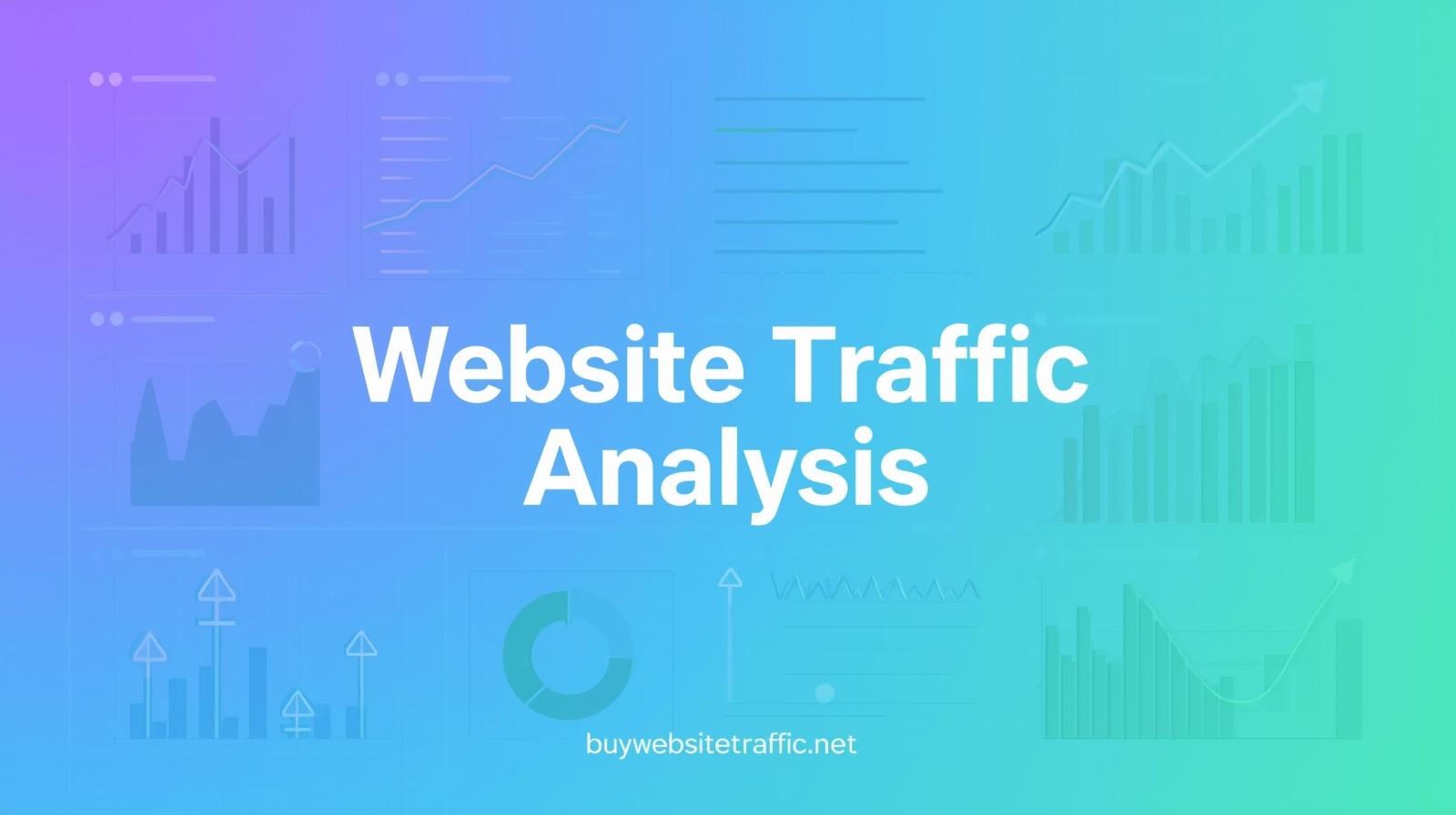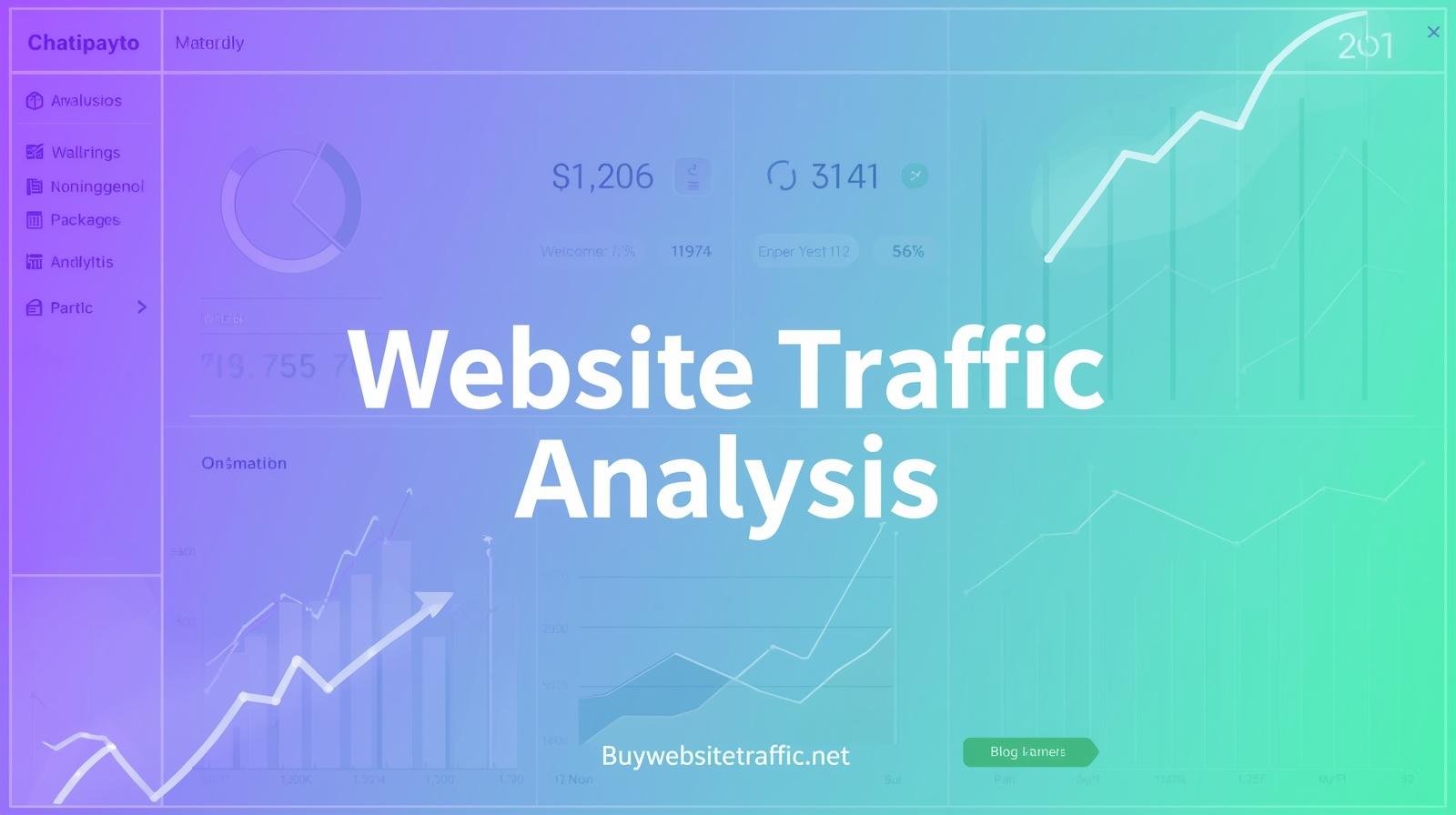Physical Address
304 North Cardinal St.
Dorchester Center, MA 02124
Physical Address
304 North Cardinal St.
Dorchester Center, MA 02124

Website traffic analysis is the key to understanding your audience, boosting engagement, and driving consistent growth. Learn the best strategies and tools to track, measure, and optimize your visitors in 2025.
In the ever-evolving digital landscape, understanding your audience is more crucial than ever. With effective website traffic analysis, you can uncover invaluable insights about who visits your site, why they come, and how to keep them engaged. By mastering website traffic analysis tools and techniques, you can optimise your strategy and significantly boost your visitor numbers in 2025. Embracing these practices not only helps you attract a larger audience but also enhances the overall user experience on your platform.
For even faster growth, explore our offer to buy website traffic.
This article will cover essential aspects of website traffic analysis that can elevate your online presence: first, we will explore various website traffic analysis software you can leverage for deeper insights. Next, we’ll discuss key website traffic analysis metrics that you should monitor to assess performance effectively. Following that, we will introduce website traffic analysis best practices to implement for sustained growth. Finally, we’ll examine how website traffic analysis for SEO can further enhance your site’s visibility on search engines.
Gaining insights into user behavior is crucial for effective website traffic analysis. By employing various website traffic analysis tools, businesses can uncover patterns and trends that guide decision-making. There are several techniques to consider:
Each of these website traffic analysis techniques helps to better understand audience engagement. However, it’s essential to choose the right website traffic analysis software that fits your specific needs, as this can significantly impact results. Thus, blending these insights effectively can lead to improved user experience and increased traffic.
How to Perform Website Traffic Analysis Effectively
To start with website traffic analysis, the first step is to connect your site to Google Analytics or any advanced traffic tool like SEMrush or Ahrefs. From there, focus on three main metrics: visitor sources, bounce rates, and session duration.
By identifying where your audience comes from (organic, paid, social, or referral), you can allocate your marketing budget more effectively. Next, track how users behave on your pages – if bounce rates are high, optimize your content with better headlines, visuals, and call-to-actions. Finally, keep an eye on returning visitors and conversions, since these numbers reveal whether your strategy is truly working.
With consistent monitoring and optimization, website traffic analysis will not only help you increase visitor numbers but also turn them into loyal customers.

To truly boost your website’s visibility in 2025, focusing on SEO strategies is essential. Start by leveraging a website traffic analysis report to identify your audience’s behavior. Understanding website traffic analysis metrics can unveil trends and key areas for improvement. Moreover, implementing website traffic analysis best practices allows for better targeting of content and interactions. However, remember that SEO is constantly evolving, necessitating a flexible approach to adapt to changes in user search behavior.
Utilizing social media effectively can significantly boost your website’s engagement and traffic. By sharing compelling content and engaging with your audience, you foster a community that feels invested in your brand. It’s essential to analyze the response to your posts through website traffic analysis tools, helping you identify what resonates. Furthermore, consider experimenting with different platforms; some may yield better results. Therefore, maintaining consistency in your strategy is crucial for long-term success.
Understanding your competitors is crucial for growth. By conducting a thorough website traffic analysis, you can identify their strengths and weaknesses. This involves examining strategies they employ, such as SEO practices, content marketing, and social media engagement. Explore what resonates with their audience and consider how these tactics might apply to your approach. In doing so, you might uncover opportunities that can enhance your own website traffic analysis efforts, allowing for strategic improvements.
Ultimately, learning from the best can provide insights that lead to better decisions and increased website traffic analysis outcomes for your brand.
To enhance your website traffic analysis, implementing the right tools is essential. Advanced technologies such as artificial intelligence and machine learning provide deep insights into user behavior. Utilizing software that tracks analytics can help you identify peak traffic times and visitor demographics. Additionally, integrating real-time monitoring systems ensures you stay updated on fluctuations. However, choosing the right combination of tools can be challenging; it’s crucial to align them with your specific goals for optimal results in traffic management and analysis.
To attract and retain visitors, crafting compelling content is essential. High-quality material not only entertains but also informs, pushing your audience to engage more deeply. Elements like storytelling and emotional appeal can enhance relatability, consequently driving users back to your site. It’s fascinating how a single blog post can change your website traffic analysis, leading to unexpected spikes in visits. Therefore, consider incorporating relevant keywords strategically, as their impact can be profound yet often overlooked.
“Content is king, but engagement is queen, and the lady rules the house!”
Ultimately, the balance of quality and commitment can propel your website traffic analysis forward. Don’t underestimate the power of fresh perspectives and authentic voices. Experiment with different formats to see what resonates, because what works exceptionally well for one audience may not for another. But this journey of discovery can significantly enhance your site’s appeal.

In summary, mastering website traffic analysis can genuinely transform your approach to attracting visitors in 2025. By understanding the nuances of your audience’s behaviour and preferences, you can tailor content that resonates with them. Therefore, regularly monitoring key metrics and adapting your strategies will empower you to stay ahead of the curve. Embrace the tools and insights available, because they can lead to meaningful engagements and improved visitor numbers. Ultimately, a more informed approach to website traffic analysis will pave the way for a thriving online presence and improved success.
Website traffic analysis is the process of collecting, measuring, and analyzing data about the visitors to a website. It aims to understand user behavior, traffic sources, and overall performance.
It helps in identifying trends in visitor behavior, optimizing the site for better user experience, improving marketing strategies, and ultimately increasing conversions and revenue.
Popular tools include Google Analytics, Adobe Analytics, SEMrush, Ahrefs, and Matomo, among others. These tools provide insights into visitor demographics, traffic sources, user behavior, and more.
To improve your analysis, ensure that you have proper tracking codes installed, segment your audience for more targeted insights, and regularly review and adjust your strategies based on the data you collect.
Key metrics to focus on include total visits, unique visitors, bounce rate, average session duration, traffic sources, and conversion rates, as these provide comprehensive insights into user engagement and site performance.
You can also verify advanced digital marketing strategies via the Google Analytics Help Center.